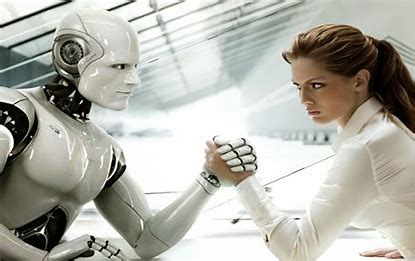Machine Learning
- Arthur Samuel in 1959
AI-ML-DL
Artificial Intelligence:
* Making Machine to think analysis and Make a decision
* Computer that can imitate human intellect and behavior
EX: Self Driving cars, Robots
Machine Learning:
* Machine Learning is a subset of AI that uses Statistical Learning algorithm to build system that have the ability to automatically learn and improve from experience without being explicity programmed
EX: Recommendation system, Amazon Alexa
Deep Learning:
* Subset of Machine Learning which follows neural networking
* Brain inspired Machine Learning model
* As model and automatically builds a hierarchy of data representations
EX: Facial Recognition system, Image captioning
Human: I Can Learn Everything Automatically from experience can you learn?
Machine: Yes i can also learn from past data with the help of Machine Learning
Application Of Machine Learning:
* Automatic Language Translation
* Medical Diagnostics
* Stock Market trading
* Online Fraud Detection
* Virtual Personal Assistant
* Email spam and Malware Filtering
* Self Driving cars
* Product Recommendation
* Traffic Prediction
* Speech Recognition
* Image Recognition
7 Steps Of Machine Learning:
* Gathering data
* Preparing data
* Choosing a model
* Training
* Evaluation
* HyperParameter Tuning
* Prediction
Feature Of Machine Learning:
* Uses data to detect various pattern in a given dataset it can learn from past data improve automatically it is a data-driven technology Machine Learning is much similar to data minig as it also deals with the huge amount of the data
Key Points:
* Rapid increment in the production of data solving complex problem which are different for a human
* Decision making in various sector incuding finance
* Finding hidden pattern and extracting useful information from data
Why Machine Learning now:
* Lot of available data
* Increasing computational power
* Advanced Algorithms
* Increasing support from industries
How does Machine Learning work:
* A Machine Learning system learn from historical data build the prediction model and whenever it recives new data predict the output from it the accuracy of predicted output dependsupon the amount of data as the huge amount of data helps to build a better model which predicts the output more accurately
Types Of Machine Learning:
* Supervised ML
* Unsupervised ML
* Reinforcement ( Semi supervised)
Supervised Learning:
* Supervised is a type of Machine Learning method in which we provide sample labeled data to Machine Learning system in order to train it and on that basis it predicts the output
* The goal of supervised Learning is to map input data with the output data
* The supervised Learning is based on supervison and it is the same as when a stuentlearn thing in the supervision of the teacher, spam filtering
Types of supervised Learning:
* Regression - Continuous
* Classification - Categorical
What is Regression:
* It is supervised Learning task where output it having continuous value
* The goal where is to predict value as much closer to actual output value as our model can and then evaluate is done by calculating error value the smaller the error the greater the accuracy of our regressionmodel
EX: Predicting the price of the car based on its age, year
What is Classification:
* It is Supervised Learning task where output is having defined labels (discrete value) for example output Purchased has defined labels 0 or 1 means the customer will purchase and 0 mean that the customer won't purchase it can be either binary or multi-class in binary classification the model predict either 0 or 1, yes or no but in the case of multi class classification model predict more than one class
EX: Gmail calssifie mails in more than one classes like social promotions update offers
Unsupervised Learning:
* Is a Learning method in which a machine learn without and supervision of been labeled classife or categorized and the algorithm needs to act on that data without and supervision
* The goal unsupervised learning to retructure the input data into new feature or a group of object with similar pattern
Types of Unsupervised:
Clustering:
* A clustering problem is where you want to discover the inherent grouping in the data such as grouping customer by purchase behavior
EX: K-means for clustering problems
Association:
* An association rule learn problem is where you want to discover rule that describe large portions of your data such as people that buy x also tend to buy y
EX: Apriori algorithm for association rule learning problems
Reinforcement Learning(Semisupervised):
* In a feedback-based learning method in which a learning agent gets a reward for each right action and get a penalty for each wrong action the agent learn automatically with these feedback and improve its preformance in reinforcement learning the agent interact with the environment and explore it
* The goal of an agent is to get the most reward points and hence it improvesits performance
EX: Robotic Dog















Comments
Post a Comment